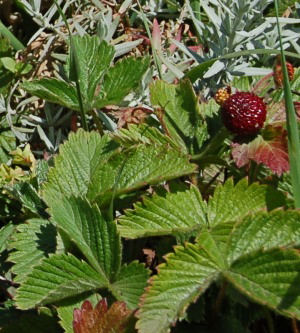2007 - In April the California Native Plant Society had their annual garden show. 50 homes on the San Francisco Peninsula opened their gardens for plant lovers to peruse. The objective is to show case native species in home garden settings, hopefully encouraging others to "go native."
She worked like a dog to get the place ready, and on the day we had over 100 visitors.
I overheard several people comment that many plant books show close-ups of the flowers (inflorescence) but they don't give an indication of the true size of the mature plant. I will try to do that here.
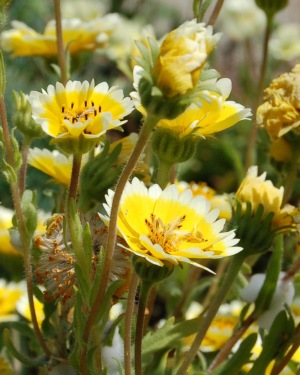
Layia Platyglossa |
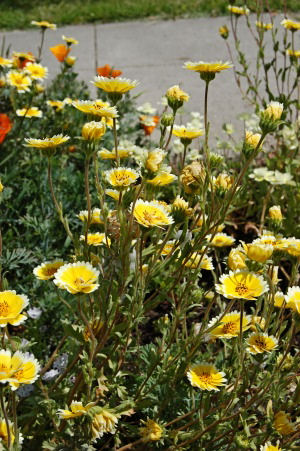 |
| These cute yellow and white flowers grow on stems about 10 inches high. The flowers are profuse and provide a shock of color. They bloom for about six weeks starting in April. In the photo at the top of the page you can see them towering over the rest. | |
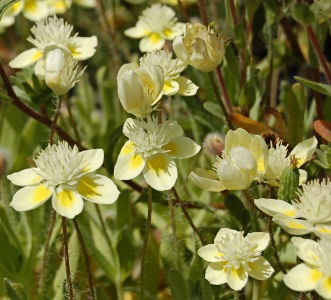 |
 |
| Cream Cups are new to the garden this year and are delightful. Again, the blooms are profuse and a light cream color with yellow inner marking on each petal. They bloom along with the Tidy Tips. Our Cream Cups are about six inches high. You can see the Cream Cups underneath the Tidy Tips on the photo at the top of the page. | |
 |
Cream Cups Platystemon Californicus 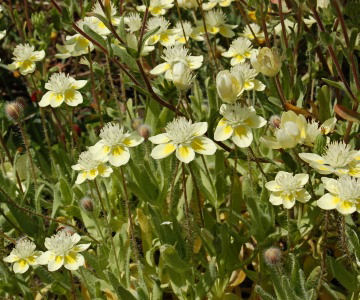 |
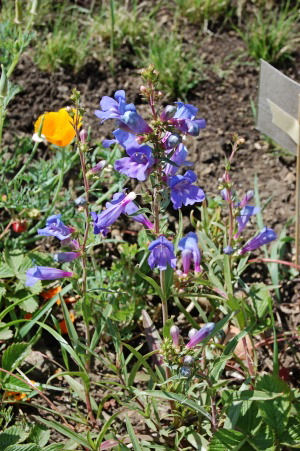 |
 |
| For a shock of bright blue and lavender these Penstemons produce. Mixed in with California Poppies they make for an eye popping display. In full sun the mix almost hurts your eyes! | |
| Penstemon Heterophyllus Blue Springs 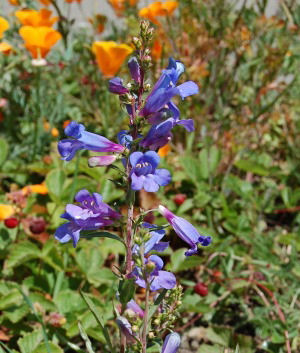 |
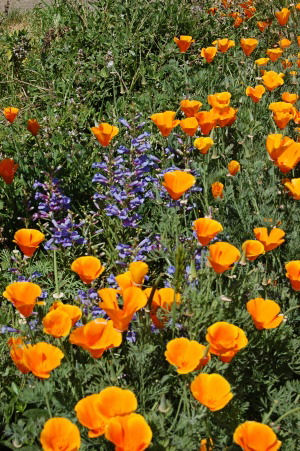 |
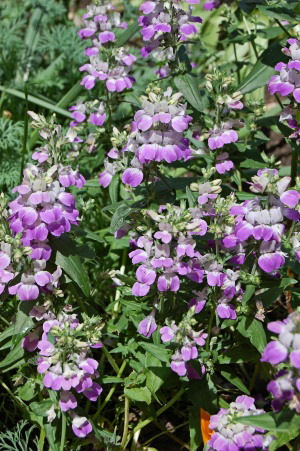 |
 |
| Chinese Houses (Collinsia Heterophylla) produce bunches of blooms on tight stalks about 12 inches high. They don't spread out the way Tidy Tips do. They make a nice feature plant. | |

Heuchera |
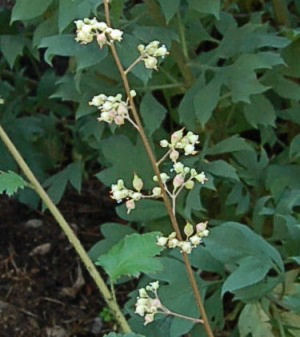 |
| Both of these plants are Heuchera. The one at the top grows in light shade close to the ground until it's time to flower, then the flower stalks grow up over six feet tall. The Heuchera below is called Dainty Bells and stays closer to the ground; flower stalks are about 18 inches. | |
| Heuchera Dainty Bells 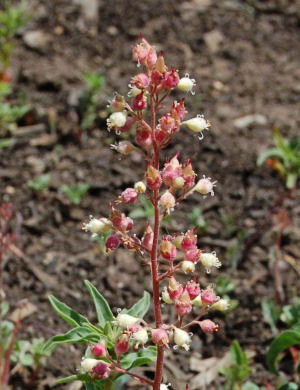 |
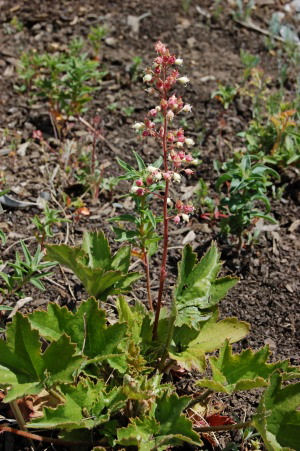 |
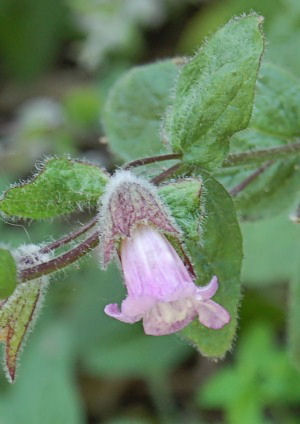 |
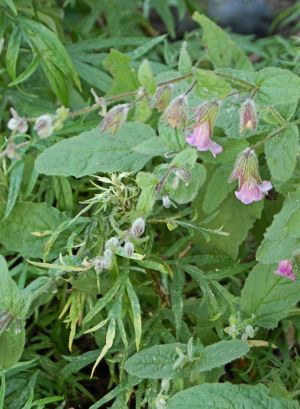 |
| Pitcher Sage (Lepechinia Fragrans) grows very bushy in the shade of a large tree. The little flowers are very pretty and display as a row on long drooping stalks. | |
 |
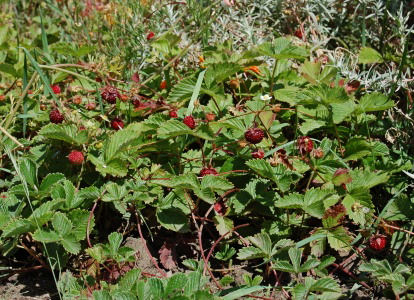 |
|
|
I think a lot of people ignore the native strawberry (Fragaria) because the fruit is so small. However it makes a nice spreading ground cover that is green all summer. |
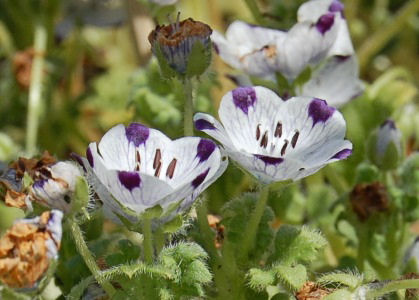 |
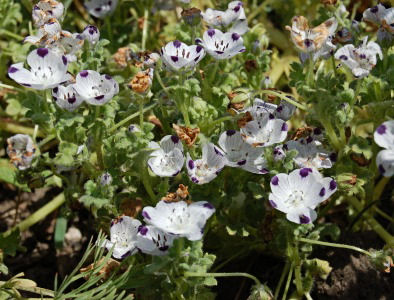 |
| Baby Five Spot (Nemophilia Maculata) has these beautiful snow white flowers with a dab of purple at the tip of each petal. They grow low to the ground, like the native strawberry. | |
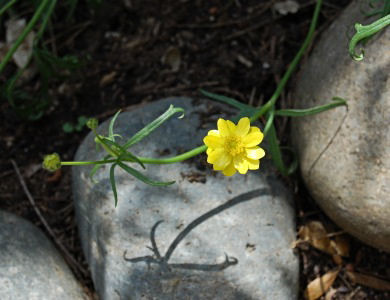 |
Ranunculus Californicus
Hers is long and leggy with single flowers on the end of long stalks. |
 |
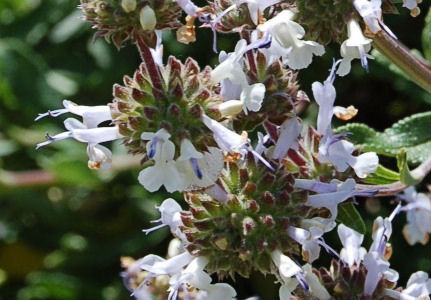 |
| This sage is growing in full sun. As you can see below it is taking over this corner of the garden. Bees love this sage. The flower spikes stick up out of the plant. When then die back it is an attractive green mass. You can see from the close-ups that the flower is very complex. | |
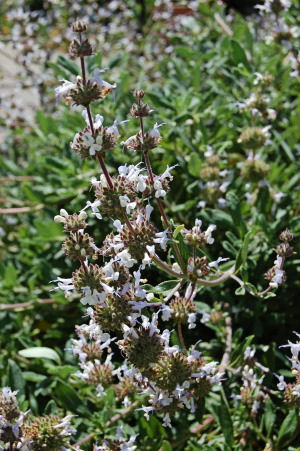 |
Salvia Melifena Shirley Sage 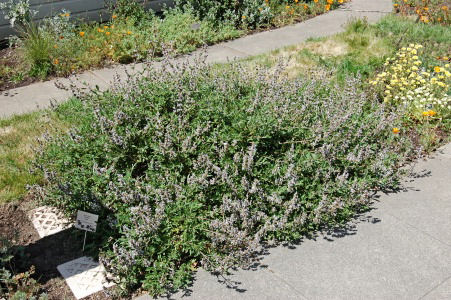 |
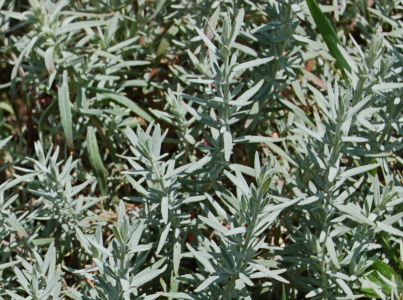 |
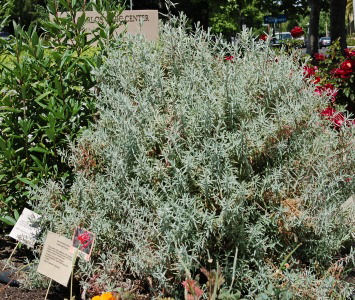 |
| California Fushia (Zauschneria Cana) is a bushy grey plant with complex small leaf spikes. The bush in this photo is about three feet tall. In mid-summer pink flower stalks emerge and the bush is decorated with a profusion of small red blooms. A beautiful plant to feature. | |
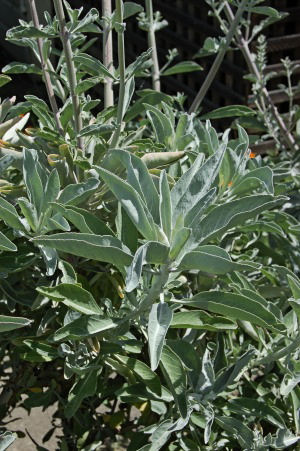
White Sage |

Sticky Monkeyflower |
| She grows these two plants next to each other. You can
see the white sage in the far back. Yes, each year it grows almost 8 feet
tall! One brush against it an you smell of sage for hours.
You can just see the sticky monkey flower to the right of the white sage in the back right of the photo. This plant is about four feet tall and well behaved. It is covered with flowers all summer. |
 |
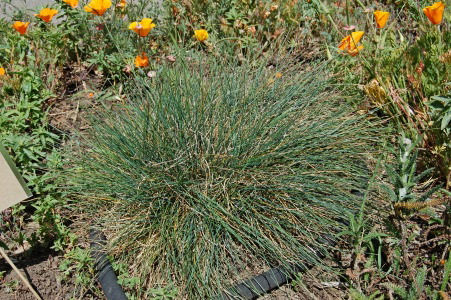 |
She's been trying to grow more grasses and
this is a Tomales Bay Fescue (Festuca Idahoensis)
The clump grass is a ball shape about 12 inches in diameter. It looks great when a few specimens are placed in the middle of more traditional plantings. It gives your garden some visual diversity. |
 |
 |
| We need some help with this bunch grass. She hopes it's a native. In the photo above right you can see that the stalks about about five feet high. | |
 |
 |
And now for the festivities
 |
 |
| Barbara and Cecily are greeters. | It can get busy. |
 |
 |
| And then there's time to chat. | Angela is always busy. |
 |
 |
| And always smiling. | But there's nothing like sitting in the sun by the garden. |

